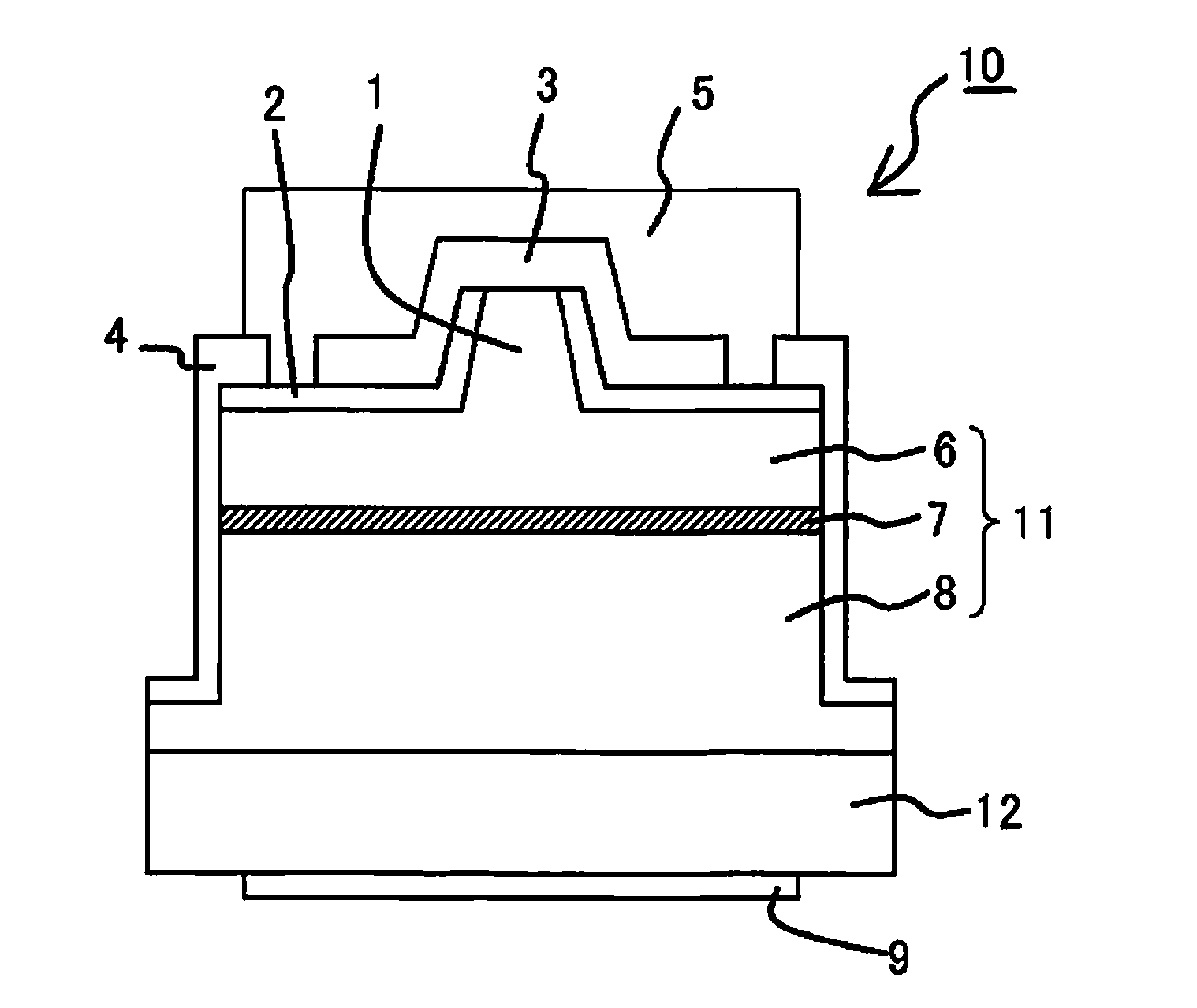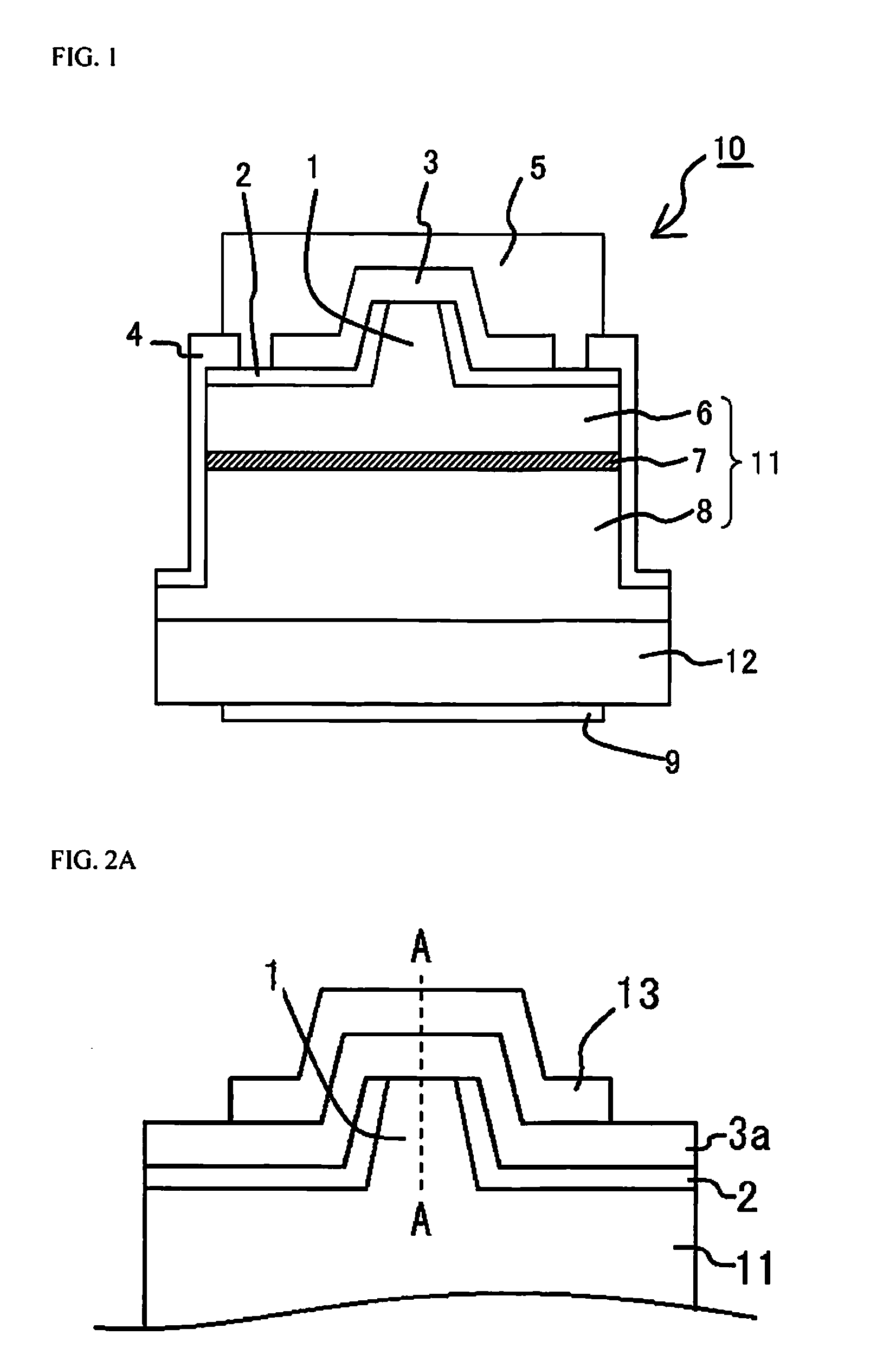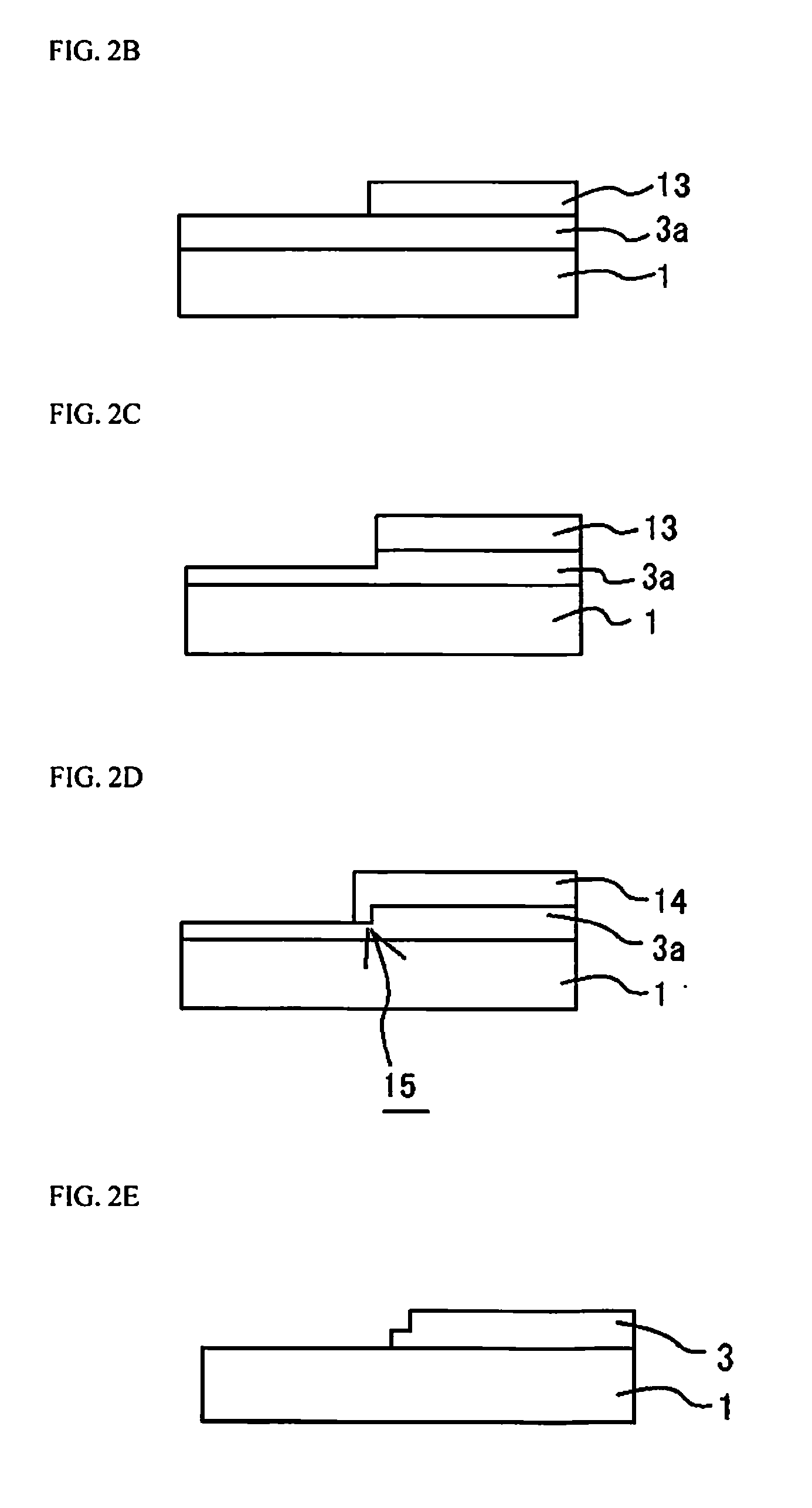Method for manufacturing semiconductor device, and semiconductor device
a manufacturing method and semiconductor technology, applied in the direction of semiconductor devices, laser optical resonators, lasers, etc., can solve the problems of increasing voltage, reducing product processing capability, and driving up manufacturing costs, so as to reduce electrode surface area, less side etching, and less voltage attributable
- Summary
- Abstract
- Description
- Claims
- Application Information
AI Technical Summary
Benefits of technology
Problems solved by technology
Method used
Image
Examples
embodiment 1
[0087]In this embodiment, the semiconductor device is the laser device 10 shown in FIG. 1, and primarily has a semiconductor layer 11 and a p electrode 3 formed on a main face of the semiconductor layer 11.
[0088]The semiconductor layer 11 has a rectangular shape in plan view, measuring about 200×800 μm. The semiconductor layer 11 is usually formed on a substrate that is a few inches in diameter, after which the electrodes and so forth are formed, and these are then separated into individual rectangular laser devices. Prior to this separation, the imaginary lines indicating the expected positions for division into individual units are planned division lines, which include a planned division line extending parallel to the first direction (M in FIG. 7C), and a planned division line extending in a direction that intersects (typically, one that is perpendicular to) the first direction.
[0089]The semiconductor layer 11 consists of an n-type semiconductor layer 8, an active layer 7, and a p...
embodiment 2
[0106]As shown in FIG. 5, in the method for manufacturing a laser device in Embodiment 1, the second mask 14 is formed without removing the first mask 13, the third mask 16 is formed without removing these first two masks, and etching is performed using the resulting masks sequentially.
[0107]Other than this, the manufacturing method is similar to in Embodiment 1, and has a similar effect to Embodiment 1.
[0108]In particular, laminating the first to third masks simplifies the work entailed by the process.
embodiment 3
[0109]As shown in FIG. 6, in the method for manufacturing a laser device in Embodiment 1, a second mask 24 that is larger in the desired location is formed on the first mask 13, and second etching is performed.
[0110]Other than this, the manufacturing method is similar to in Embodiment 1, and has a similar effect to Embodiment 1.
[0111]In particular, putting the second mask in the desired shape allows the conventional pattern shape to be maintained.
PUM
 Login to View More
Login to View More Abstract
Description
Claims
Application Information
 Login to View More
Login to View More - R&D
- Intellectual Property
- Life Sciences
- Materials
- Tech Scout
- Unparalleled Data Quality
- Higher Quality Content
- 60% Fewer Hallucinations
Browse by: Latest US Patents, China's latest patents, Technical Efficacy Thesaurus, Application Domain, Technology Topic, Popular Technical Reports.
© 2025 PatSnap. All rights reserved.Legal|Privacy policy|Modern Slavery Act Transparency Statement|Sitemap|About US| Contact US: help@patsnap.com



